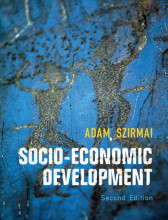Foreign aid and development
12 important questions on Foreign aid and development
Criticisms of motives of aid
-Aid is provided on a government to government basis.
- Aid doesn’t deliver what it promises.
How does the two-gap model of Chenery and Strout provide a theoretical justification for providing foreign aid to developing countries?
- The savings gap. Domestic savings are insufficient to meet investment requirements, foreign aid can compensate for the shortage of domestic savings.
- The foreign exchange gap. In a LIC the new industrial sector and infrastructure materials have to be imported from abroad, which requires foreign exchange.
Should aid be targeted directly at groups living in poverty?
- Redistribution is required
- But growth remains important to poverty reduction
- Higher grades + faster learning
- Never study anything twice
- 100% sure, 100% understanding
How important is aid? Discuss the importance of foreign aid as a proportion of total financial flows to developing countries and as a percentage of GDP in different developing countries and regions.
-The total share of official development assistance (ODA) has decreased significantly in total resource flows.
Mainly due to increase in other financial flows than reduction of aid.
Disadvantages of food aid
- It makes production of food in developing countries unprofitable. So, developing countries become permanently dependent on food imports.
What is the connection between programme aid and good governance?
-It leaves more discretion to the recipient government.
-It is more flexible
-It requires high levels of government capabilities and is therefore distributed to countries that have high scores on government indicators.
Discuss the fungibility thesis. What are the implications of fungibility for the evaluation of development projects? What are the implications for aid policies?
Criticisms:
- Recipient countries lack sufficient resources to finance all high-priority projects.
- It isn’t a problem if some part of aid is used for expansion of consumption in very poor countries.
What are the main points of the orthodox argument in defence of foreign aid?
- Aid provides additional resources that would otherwise not have been available for development.
-It also contributes to the mobilisation of latent resources in developing countries.
To what extent does the empirical literature conclude that there is a relationship between aid and growth?
- Aid has diminishing returns. When human talent is only focused on aid flows, aid becomes an obstacle to socio-economic development and should be decreased.
- Improving effectiveness of aid is more important than increasing volumes.
To what extent does the effectiveness of aid depend on development policies and development strategies in the countries receiving aid?
- E.g. policies that overvalue exchange rates
Programme aid can help reverse the negative effect of policies.
Discuss the differences between conditionality and selectivity.
Conditionality: foreign aid is used to put pressure on policy makers in developing countries to engage in policy reform.
- Conditionality is insufficient because countries scan make promises on reform which they don’t follow after they have received the aid.
Instead, reforms should be owned by developing countries instead of being imposed by donors.
Shift from conditionality to selectivity: aid and debt relief is provided to countries that have already implemented reforms in policies, institutions and governments.
What is meant by the term ‘country ownership of aid’? summarise and discuss the main elements for the Paris agenda for aid effectiveness.
- Ownership – aid is owned by the aid recipient. They have the responsibility of developing its own strategies with the received aid.
- Alignment of donors and recipients – policies shouldn’t be imposed from outside
- Donor coordination and harmonisation – it’s wasteful if donors duplicate each other’s activities
- Results orientation
- Mutual accountability
The question on the page originate from the summary of the following study material:
- A unique study and practice tool
- Never study anything twice again
- Get the grades you hope for
- 100% sure, 100% understanding
































